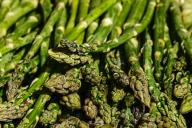Japanese maples are one of the most beautiful maple varieties you can find - they look amazing!
Meanwhile, these trees aren't that popular in the USA - but why?
Here are a few reasons why lots of keen gardeners avoid growing them.
Climate Preferences
Japanese maples thrive in temperate climates, and some varieties prefer specific conditions.
In the vast and varied climates of the USA, not all regions provide the ideal environment for these trees.

Soil Requirements
These maples prefer well-draining, slightly acidic soil.
In regions where the soil composition is significantly different, it might be challenging to create the optimal conditions for their growth.
Disease Susceptibility
Japanese maples can be susceptible to certain diseases and pests.
In regions where these issues are prevalent, growers might choose alternative tree species that are more resistant and easier to maintain.
Specific Pruning Needs
Some varieties of Japanese maples require specific pruning techniques to maintain their desired shape and aesthetic.
This may deter some homeowners or landscapers who prefer low-maintenance plants.
Limited Size Varieties
The smaller size of Japanese maples, while attractive for certain landscaping needs, might not suit larger spaces commonly found in the USA.
Homeowners might opt for larger trees that provide more shade and visual impact.
Availability and Cost
While Japanese maples are available, their initial cost can be higher compared to more common tree species.
This factor, coupled with the preference for faster-growing and budget-friendly options, might influence planting decisions.
Slow Growth Rate
Japanese maples are known for their slow growth.
In landscaping projects where a quick transformation is desired, faster-growing trees might be chosen over Japanese maples.
Previously, we talked about









